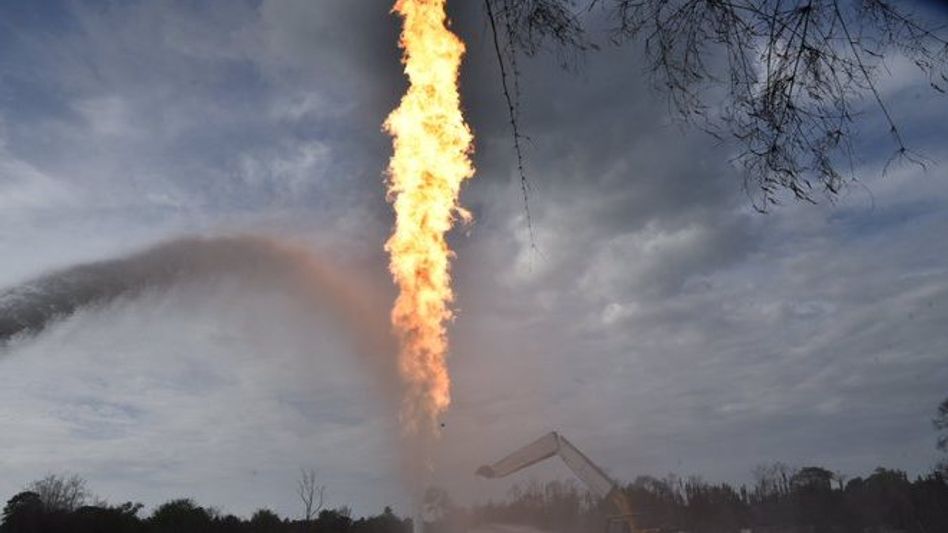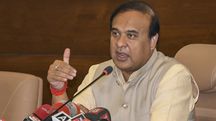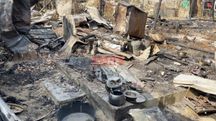Assam: Draft EIA mocks Baghjan blast tragedy by exempting Oil and gas exploration
 Representative Image
Representative ImageThe Environmental Impact Assessment ( EIA ) notification 2020 is set to replace and alter the existing 2006 EIA by modifying many of its clauses. Concerned people and domain experts allege that it deviates from the Environment (Protection) 1986 and international commitments. As such, civil society and students over the country have been raising their voice against the amendment.
Amid the draft, another underlying reality is the Baghjan well blowout has turned into a major tragedy for the entire Assam and particularly the villagers in the adjoining villages. Looking at the plight of the victims who have suffered for a long time now, one will assume that the elected Government must be planning to take steps to reduce the probability of repetition of such an incident. The reality is far from the truth.
The Draft EIA 2020 has categorized all operations associated with offshore and onshore exploration of Oil and Gas in the B2 category. All projects falling under this category are exempted from submitting an EIA report altogether. This means that no environmental impact assessment needs to be done for any Oil and Gas operation in the future. All that needs to be submitted is an Environmental Management Report which has a far less scope for scrutiny.
A major claim by the villagers was that they were not given enough time for public hearings or their voices in such hearings were not considered by the authorities. The draft EIA does away with all options for such public consultations with regards to all B2 projects. This means, projects classified under the B2 category (which includes all oil and gas exploration projects) do not need any kind of public consultation anymore.
This draft EIA is a tight slap on the face of the victims of Baghjan tragedy and all their pleas.
Also read: Assam: 150 animals dead as flood fury continues in Kaziranga National Park
What the new notification modifies?
The existing notification requires the scoping of projects as B1 & B2 category on a case by case basis but as per the new draft EIA, they have predefined A, B1 and B2 categories so as to determine the jurisdiction of central and state govt agencies. In addition, a new Technical Expert Committee has been established which will be bestowed with the responsibility of categorization and even re-categorization of A, B1 & B2 projects on a regular basis but in consonance with scientific principles.
Around 40 forms of projects have been enlisted in the draft EIA, which are exempted from prior environmental clearance. In fact, some of the extraction projects are covered under this list (sand mining for example). As regards public consultation, the prior notice of public hearing has been reduced to 20 days, which gives very less time for any objections from the stakeholders. Certain toxic industries (red as well as orange) can run their operations in close proximity of between 0-5 km from any Protected Areas (National Park/Sanctuary).
The validity of EC for river valley projects has been escalated to 15 years from existing 10 years, mining projects has been increased to 50 years from the existing time period of 30 years. This will favour entities like COAL India and other Hydel power projects proponents
In the existing EIA norms, industries are required to submit two compliance reports/year but the draft EIA proposes to submit only one such report in a year.
Even the decentralized frame of EIA has been diluted upto certain extent because it does away with the prerequisite of expert committees to be set up in consultation with state governments and the central govt will determine the composition of the state level regulatory bodies dealing with EIA.
In addition, in 2015, one committee was formed by the Central govt under the chairmanship of T S R Subramaniam. Selected environmental laws were under the review of the said committee. environmentalists pointed out several criticisms as regards this committee, including alleging the said endeavour as an attempt to ease single-window environmental clearance by diluting stringent pre-existing standards. COVID-19 jolted the economy and I feel the government will aim to enhance the pace of industrialization for fixing the setbacks due to the pandemic but how sustainable will these development efforts be, that is going to be a matter of great challenge as well as concern.
Going forward: EIA
Even before the EIA draft, there have been irregularities in terms of getting clearances. This new draft increases the potential to carry them at an institutional level. However, the onus to monitor and stop such practises will only come if the public participates in the clearance process and not just come out later when things take a wrong turn. The state government departments also need to make sure due to delligence of the law. As for the Centre, they need to understand the delicate geography of Assam and other ecological states, especially at a time when a Baghjan like incident has happened in the state.
-with inputs from Chiradeep Basak
Readers like you make Inside Northeast’s work possible.
To support our brand of fearless and investigative journalism, support us HERE.
Download:
The Inside Northeast app HERE for News, Views, and Reviews from Northeast India.
Do keep following us for news on-the-go. We deliver the Northeast.
Copyright©2025 Living Media India Limited. For reprint rights: Syndications Today









